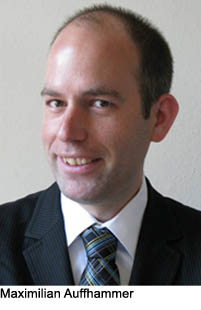
Prof. Auffhammer’s research project at PERC examines the extent to which people adapt to climate change in California’s residential electricity sector. In this Q&A, Auffhammer gives an overview of his project. For more PERC Q&A’s, visit the series archive.
Q: You have written extensively about California’s electricity market before. What have you discovered?
A: In a paper last year, my coauthor and I looked at people operating the air conditioners more frequently when it is hot outside. However, we did not consider the issue that, in the long run, people may buy additional air conditioners when the climate shifts. If it is going to be hot during the summer in San Francisco, some people may actually consider installing an air conditioner, which in the current climate regime they would not.
Q: This is the distinction you draw between intensive and extensive margin adjustments in your latest paper at PERC, right?
A: Right. An intensive margin, as I use it in the paper, means that a household uses an existing piece of equipment more intensively. You operate an installed air conditioner more frequently. The extensive margin adjustment is the purchase of additional air conditioners.
Q: What will the market response be to this increased demand for electricity?
A: Well, the easy answer usually is if quantity demanded goes up, price rises. Electricity markets in most places are heavily regulated. Prices will not adjust instantaneously, as utilities have to go through a hearing process in order to change their prices. But in the long run, holding technology constant, prices would rise.
Q: Some new technologies may cool or heat homes, like solar energy. How far away is solar energy from making a difference?
A: Solar PV, which are the solar panels you see on peoples’ homes, generate electricity “for free” – that is once you have paid for the very expensive solar panels. In order to figure out whether these are competitive with fossil sources therefore depends on a number of issues. From the household’s perspective, if you are living in a sunny area that is not too hot (think La Jolla) and you are paying 35 cents per kWh, after taking advantage of the subsidies, solar is surely a good deal. However, not all of us live in La Jolla, and as the economist I would argue that someone has to pay for the subsidies. Solar is not a universal solution. The prices of panels have come down rapidly, yet we still need to figure out how we deal with the issue that renewables’ peak production does not coincide with peak demand on average.
Q: How is electricity produced in California?
A: We do not have a single coal-fired power plant in California. It is nuclear, gas, hydro, wind and solar mostly. One has to remember that the grid goes beyond California’s borders. We use electricity produced from Oregon, Nevada, Arizona, etc. And these places do have lots of coal in their mix. An electron is an electron – they are not green or brown. The marginal cost of producing electricity by coal is significantly lower than producing electricity by natural gas.
Q: What are some of the policy implications of your study?
A: The most important thing I want people to understand is that while we are trying to decrease emissions and electricity consumption in our mitigation efforts, climate change will push consumption in the other direction, making it harder to meet future reduction goals, not just because of rising incomes but also because of a hotter climate.



